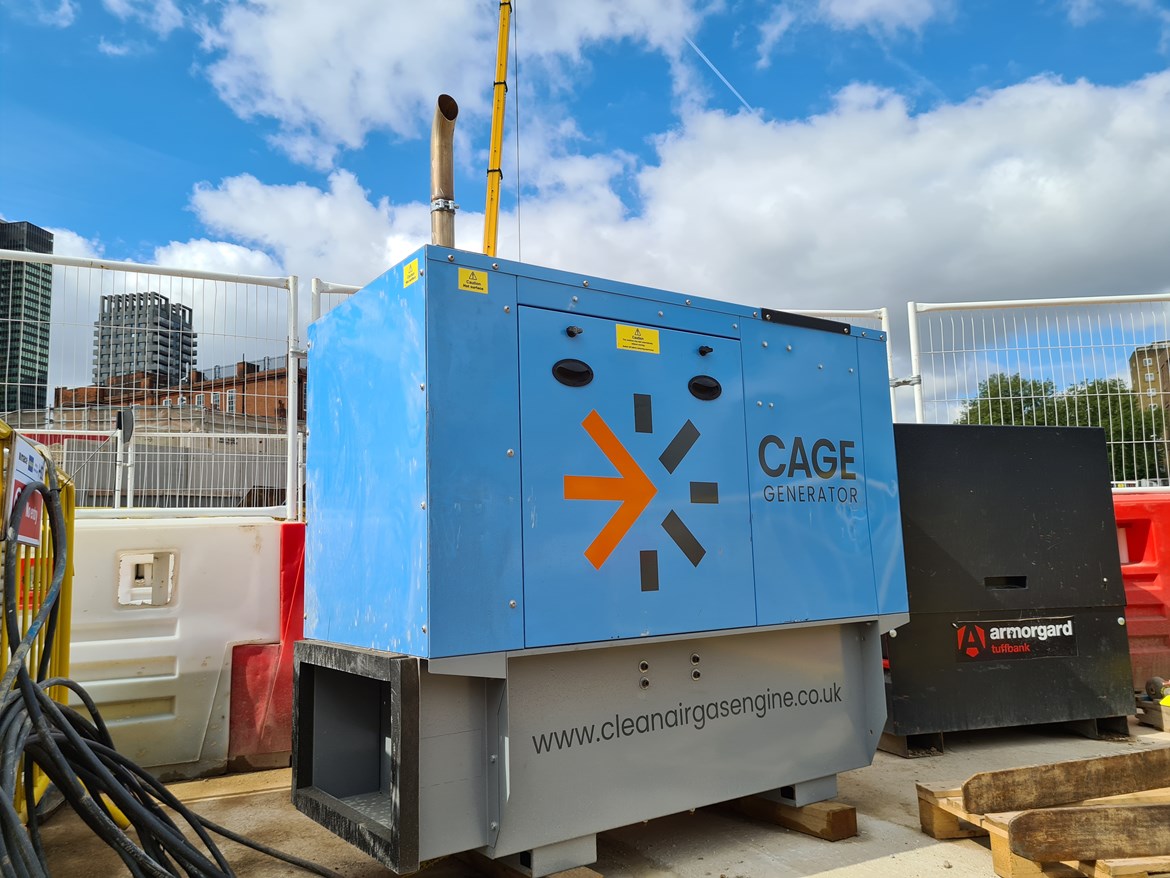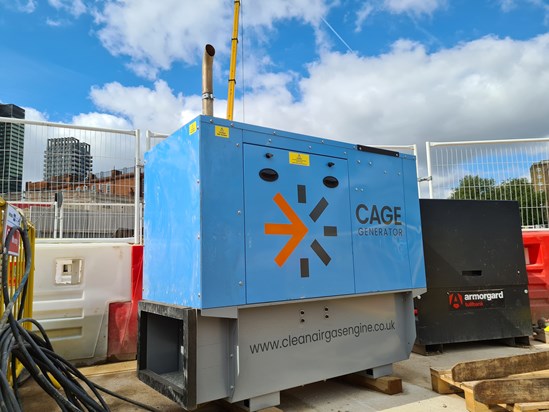Following the successful trial of the new Clean Air Gas Engine (CAGE) integrated into a solar-battery hybrid power system in an Advante welfare unit on an HS2 construction site from December 2020, HS2 is trialling an OakTec standalone CAGE generator which has delivered massive reductions in emissions, resulting in improved air quality.
The innovation, which uses liquefied petroleum gas (LPG) as a direct replacement for diesel, is being trialled by HS2’s contractor Mace Dragados on a site at Euston and has exceeded its targets.
The generator unit, developed by OakTec used the latest vehicle Euro 6 engine platform with the automotive industry’s most advanced emission reduction technologies, including intelligent control of the engine’s operation and the latest exhaust aftertreatment systems. The research and development of the CAGE engine was funded by Innovate UK through the SBRI initiative.
Emission testing of the unit undertaken by Imperial College London, showed significant reduction in harmful pollutants, up to 95% reduction in NOx (Nitrogen Oxides) and particulate exhaust emissions, when compared to the output of a conventional diesel-fuelled welfare unit power system.
Andrea Davidson, HS2’s Air Quality Manager said:
“We aim to make the HS2 project net zero carbon from 2035, with the target of having all our construction sites diesel-free by 2029. To achieve these ambitions, HS2 is working closely with UK manufacturers and researchers to trial new technologies, to help encourage the construction sector to move away from diesel and reduce greenhouse gas emissions. The successful results of the CAGE trials are key milestones in achieving this, and we’re looking forward to seeing products like this rolled out across our sites in the future.”
Paul Andrews, CEO at OakTec said:
“OakTec is very proud that the new bioLPG CAGE 25kW generator is delivering such excellent emissions performance in the trials with Mace Dragados on the HS2 site at Euston. We knew that the engine was ultra clean in lab tests, but real-world testing is what counts.
“The HS2 project has offered us a perfect platform from which to develop, trial and showcase our innovations and we are grateful for the support and continued collaboration with the Clean Air team and the work done by Imperial College London to provide emissions data from site trials.”
Ben Wheeldon, Programme Director for Mace Dragados said:
“The hugely positive results of this CAGE trial directly support our ambition to work towards net zero carbon on this project; something we consider as a responsibility that everyone in the Mace Dragados team must push for.
“The results also boost our mandate to use this high-profile project as a hotbed for innovation. We’ve already got two other alternative low-carbon energy-generation trials in the pipeline, and successes like the one we’ve had with CAGE give us and the client the confidence we need to keep pushing the boundaries and trying new things.”
Daniel Marsh, Programme Manager, Centre for Low Emission Construction, Imperial College said:
“Finding new and innovative solutions that can deliver real benefits for construction sites today, as well as in the future, is essential as the industry takes increasing steps to decarbonise.
“The CAGE generator, developed by OakTec, is a perfect example of the low emission technology required to help the sector meet stringent Net Zero targets. This trial demonstrated it to be significantly cleaner than the EU Stage V diesel engines it will displace, helping to reduce emissions, worker exposure and damage to the environment.”
Much of the UK fleet of diesel generators still use older EU Stage IIIA engines and therefore have minimal, or no exhaust gas after-treatment technology to reduce harmful emissions. The CAGE trial aimed to surpass the Stage V emission standards for Non-Road Mobile Machinery (Stage V is the cleanest available diesel technology).
During the trial, the average emissions from the three load points across the 6 test cycles for the 24kW rated engine were calculated and compared against three different emission standards in the corresponding rated power band – EU Stage IIIA for constant speed diesel engines (category “J”); EU Stage V for constant speed diesel engines (category “NRE-v/c-3”); EU Stage V for non-hand-held spark ignition engines (category “NRS-v-2b”).
The emission test results clearly demonstrate that the CAGE-generator operating on LPG achieved the EU Stage V NRE and EU Stage V NRS emissions standards for all pollutants across all test loads.
ENDS

